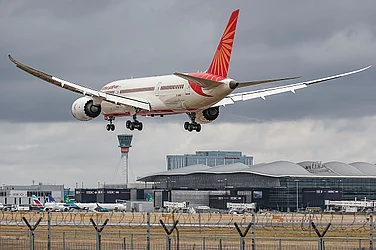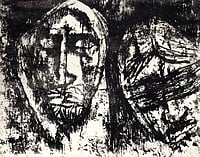India’s political leaders have devoutly believed, since the dawn of independence, that all they have to do to improve a city’s prospects is to change its name. Magically, the new name confers upon the city a radiance it formerly lacked, or restores it to its lost glory. Poverty and illiteracy cease, amenities appear out of the blue, the housing and sanitation problems are solved, the traffic runs smoothly, pollution vanishes, social conflicts are dissolved in festivity, and the general populace finds happiness in streets now paved with gold. All this is, of course, rubbish. The changing of place names is intended to serve a populist agenda. It appeals to indigenist sentiment and salves a local sense of grievance nursed in the face of the rapid influx of migrant labour, a perceived loss of control over one’s own territory, or the experience of marginalisation by a remote central authority. This was certainly true of the process by which Bombay was renamed as Mumbai in 1996, the groundwork for the change having been laid in 1995, by the government of Maharashtra, which at that time was a coalition formed by the Bharatiya Janata Party (BJP) and its then ally, the Shiv Sena, which coloured its majoritarianism with a distinct nativist shade. By whatever name, the island metropolis continued to conform to the visionary architect and urban planner Charles Correa’s distinction between an inspiring urban experience and a shambolic urban fabric: “Great city, terrible place”.
While the citizens of the west-coast metropolis knew their hometown by both these names—it is ‘Bombay’ in Anglophone usage, ‘Mumbai’ in Marathi and Gujarati—it also wore other names. In Hindi and Urdu, it was ‘Bambai’. The socio-linguistic context determined which name was used. The same individual might, in the course of a day, have referred to her city by three different names, as she transited from one language to another. Like so much else in India’s plural and heterogenous lived cultural reality, names, places and practices exist in versions, and we code-switch as we refer to them in varied situations.
ALSO READ: Silver Jubilation
The nativist claim to a monopoly on naming the city must contend with a plain historical truth, phrased with lapidary precision by the urban historians Sharada Dwivedi and Rahul Mehrotra in their landmark 2001 book, Bombay: The Cities Within: “Bombay was not an indigenous Indian city. It was built by the British expressly for maintaining trade links with India and was never perhaps expected to become a large town. Thus, it was neither oriented nor situated around a sacred place, nor was it structured in relation to the cardinal points and directions as a traditional Indian town might have been built. In fact, being primarily set up as a port, it developed looking out to the ocean with the quay as its focus.” This is the origin of the city as we know it today, although its history as a settlement of one kind or another reaches back into antiquity.

The islands on which Bombay/Mumbai stands were known as Heptanesos (‘Seven Islands’) in the Periplus of the Erythraean Sea, a Graeco-Roman atlas of the Indian Ocean composed in the 1st century CE, very probably in the Red Sea port-city of Berenice. The island of Elephanta near Bombay/Mumbai, today regarded as merely a tourist venue or at best an archaeological site, was once Gharapuri. It was variously settled between the 2nd and 8th centuries CE by Buddhists and Hindus, ruled by the Western Kshatrapa, Gupta, Kalachuri, and Rashtrakuta dynasties. Considerable economic surpluses are required before funds can be committed to such grand, complex edifices as the beautifully designed and sculpted shrine complexes on Elephanta. This indicates clearly that the ancient constellation of islands that included present-day Bombay/Mumbai and Elephanta was integral to the prosperous circulations of Indian Ocean trade in the first millennium CE, which would have linked them to the Persian Gulf, the Arabian peninsula, and the East African seaboard. We could argue that the productive tension between a local and a transnational identity was inscribed into the basic nature of this west-coast settlement, whether it was called Heptanesos or Bombay or Mumbai.
ALSO READ: Postcards From The Newsroom
As an international port and polyglot centre of trade and manufacture developed by the British colonial administration in India, Bombay/Mumbai looked outwards to the widespread international framework in which it played a role. At the same time, although it is an island situated off India’s west coast, its inhabitants have been connected by ties of ethnicity, occupation, worship and exchange to the hinterlands of Maharashtra, Goa, Karnataka, Gujarat, Kutch, Sindh, Telangana, Andhra Pradesh—as well as, in more recent decades, Uttar Pradesh, Bihar, Mithila, and Odisha, as well as Nepal and Bangladesh. The city has therefore maintained an intimate and organic association with the larger realities of the subcontinental environment. A substantial percentage of the city’s population circulates, seasonally as it were, between the island metropolis and their points of origin in the subcontinent’s rural and small-town elsewheres. And, presiding over this kaleidoscopic metropolitan society is a ruling class that largely speaks, writes, reads, and is most at home in English. Many of the children and grandchildren of nativist or liberal Marathi-speaking politicians, too, are sent to colonial-style private schools or the new international schools.
Since 1996, two major competing claims, two rival political imaginations have asserted themselves over this vibrant and populous metropolitan region. ‘Bombay’ has come to symbolise an openness to an inclusive cosmopolitanism and diversity of experience, alluding to the city’s colonial history, and often though by no means necessarily incarnating an elite sensibility. This name incarnates the designation, ‘Bom Bahia’, Good Bay, that the Portuguese gave to the outpost when it was ceded to them by the Gujarat Sultanate in 1534. It passed to Britain as part of Catherine of Braganza’s dowry when she married Charles II in 1661, and was leased to the East India Company, which launched it on the trajectory that would culminate in metropolitan status. ‘Mumbai’, on the other hand, tends to downplay or even robustly reject this colonial history as an alien contamination, insisting on a more nativist vision that roots the city in a Marathi and tacitly Hindu ethos. The name memorialises the mother goddess, Mumba-Aai or Mumbadevi, whose worship was prevalent in precolonial times and continues in the city today, and thus serves as an ideological rallying point for groups who assert the ideal of cultural purity, and who oppose any dilution of the city’s supposed core identity by other linguistic, religious or ethnic constituencies.

Flamingos@Covid Lockdown.
The competition between the claims of Bombay and Mumbai surfaces in everyday metropolitan experience: in conversational exchanges, humour, artistic gestures, graffiti slogans and such public-sphere performances as demonstrations and protest marches. The cosmopolitan ideal enshrined in ‘Bombay’ is rhetorically presented, by its opponents, as the preserve of an elite. The charge tends to be persuasive because, while large numbers of citizens do indeed subscribe to the cosmopolitan ideal in practice, its theoretical elaboration is left to members of the articulate classes, who sometimes render it in self-defeatingly narrow terms as a programmatic rejection of the local. The nativist agenda manifest in ‘Mumbai’ is identified with the Shiv Sena, which declares its (more theoretical than practical, now) allegiance to a ‘sons of the soil’ policy, has in the past unhesitatingly used violence in the service of populism, and yet combines its militant Hindu communalism with an emphatically urban vision of the local.
ALSO READ: At Swim, Two Birds Perched On Latticed Sites
Between these two extreme positions, Bombay/Mumbai exists in a range of versions. There are as many images, visions and discourses of the city as there are interest groups, for Bombay/Mumbai is a powerful cultural imaginary, variously conceived and constructed. Each version conveys the narrator’s emotional and material investments in the city. There is the trans-ethnic English-speaking elite that views Bombay as a Westernised island incidentally moored off the forbidding and backward mainland of Maharashtra. There is the Marathi-speaking bourgeois intellectual or person of mill-worker heritage in Central Bombay, to whom Mumbai is an inalienable extension of Maharashtra. There is the inner-city Gujarati or Parsi merchant, whose ancestral trade linkages connect him to the pre-Maharashtra past of the Bombay Presidency, and to a present that crosses the state boundary to connect Bombay with Surat, Ahmedabad, Baroda, Rajkot and other commercial and industrial centres in Gujarat.
And there is the ‘South Indian’, a broad and inaccurate classification that includes communities from Karnataka, Kerala, Tamil Nadu and Andhra Pradesh, across a spectrum of social and cultural locations, among them hoteliers, journalists, publishers, booksellers, artists, film-makers, traders, accountants and craftspersons. Each group has its specific nostalgia for a charmed period in the city’s history, its own urban foundation mythology, and a special belief in its authority to define the city’s nature.

Terror@26/11
And yet, each group has left its mark on the urban topography and culture, in place names that refer to monuments present or present only in memory. Their cultural practices and the identity markers they have adopted have gone into the city’s place names, where they occupy an organic place in the lives and memories of people. Consider some of these Bombay/Mumbai place names. Charni Road marks a vanished pasture, Walkeshwar a destroyed Shaivite shrine, Pydhonie a ritual of foot-washing rendered archaic by reclamation and vehicular traffic, Kala Ghoda an equestrian statue that no longer stands there. The romance of an Iberian princess hovers about Bandra, and if Mahim was once a fisher-king’s demesne, Malabar Hill delights in the memory of pirates and mariners playing desperate games of hide-and-seek along the west coast. Such names demonstrate a lively collective imagination at work, mapping and re-mapping the currents of experience, alternately colluding with and dissenting from the narratives of official mythology. They evoke histories of arrival and departure: they graph waves of settlement, the ebb and flow of community. Above all, they embody the sensation of locality, the distinctive experience of sights, sounds, smells and emotional associations that turns space into place.
ALSO READ: The Bully Wears A Tailored Suit
The Malabar Hill area is usually thought of as Mount Affluence, but it is also an exceptionally sacred site to several million people. Banganga, the tank-temple complex on its western slope, elaborates the spiritual universe of the Gaud Saraswat Brahmin pioneers who established it. The temple of Babulnath Mahadev on the hill’s east slope records the aspirations of the Bhatias and Kapols who first worshipped there. The Tower of Silence, a wooded sanctuary, is where the Zoroastrian dead make their way into eternity. And yet, significantly, even as it describes a vast cosmology from various perspectives, the Malabar Hill area does not lose its specific and detailed identity as place. Indeed, it is the unique weave of heterogenous details that produces that sense of place.
Given a lived experience of such productive complexity, it is unfortunate that we should have made the transition from celebrating this great city by its various names, to fighting over what single name it ought to bear. When our deities can be known by various names, in their various svarupas or avatars, why should our cities be denied that privilege? When Shiva can be Mahadev, Shambhu and Shashidhar; when Krishna can be Keshava, Madhava and Hrishikesha, why should we apply a binaristic ‘either-or’ logic to our cities, and have to decide whether we should use Bombay or Mumbai or Bambai?
ALSO READ
Ranjit Hoskote is a poet, cultural theorist and curator

























